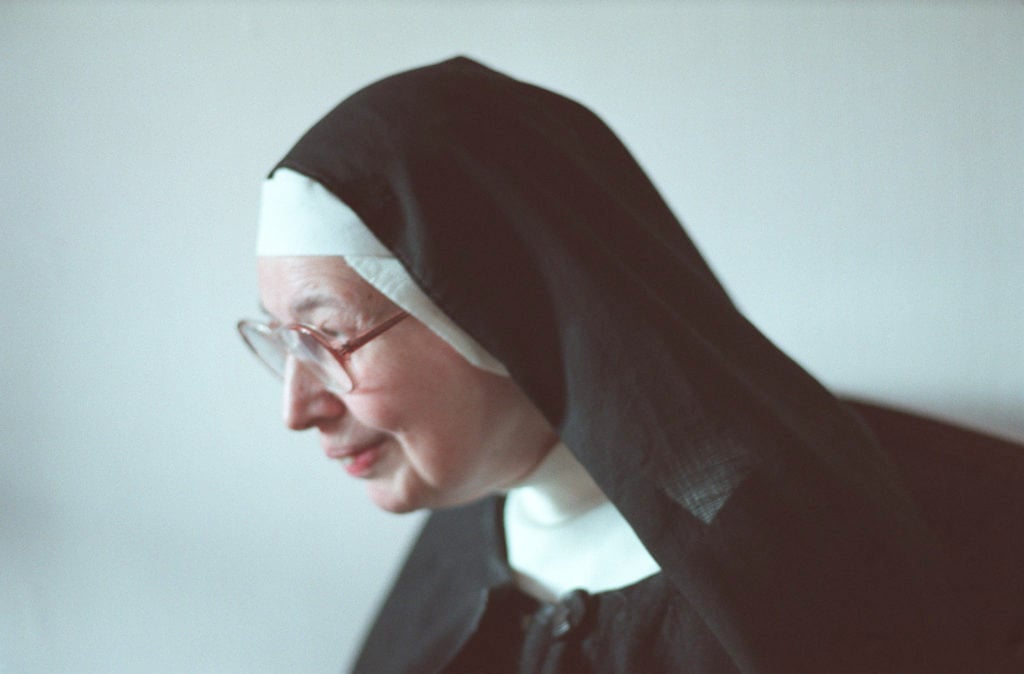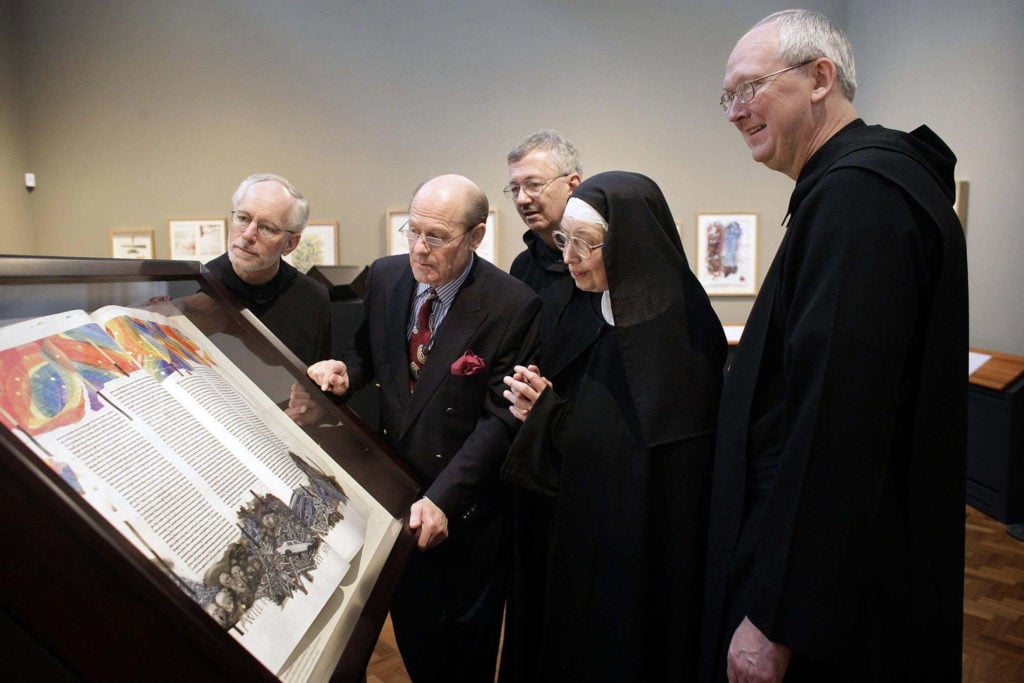Opinion
What Sister Wendy Beckett, the Late Nun and Popular Art Historian, Taught Me About Being a Curator
She made me want to study art history.

She made me want to study art history.

Carmen Hermo

As a good Catholic teenager, I immediately fell for Sister Wendy Beckett, the nun and popular BBC art expert who died on December 26, 2018, at age 88. My high school humanities teacher, Mr. Kisch—who was already blowing my mind with introductions to the likes of Caravaggio, Louise Bourgeois, and Keith Haring—turned over a few classes to old tapes of the 1996 classic Sister Wendy’s Story of Painting.
An expressive, effusive champion for artworks and art history, Sister Wendy enraptured me with the unabashed love that emerged from the way she spoke about art—where so many things were “wonderful” and, while admitting Classical art could frequently be dull, she smiled through her description of the “virtuous Ingres” who basically “licked his paint adoringly over every part of” his anatomically impossible subjects.
Media outlets reporting on Sister Wendy’s passing all agree she was a star—her hugely popular television shows reached millions of viewers and she published more than 30 books on art and religion. But posthumous tributes show little consensus as to her relationship to the art world, and some avoid identifying her as an art critic or art historian entirely. For me, she was not only both, but also a consummate educator with the unapologetic judgment of a curator. To trouble over labels for her brilliance is to miss the point of what she taught us—to understand both art and ourselves, we should look, see, and learn.
Born in Johannesburg in 1930, Beckett knew she would dedicate her life to God even as a child. At 16, she joined the Sisters of Notre Dame de Namur, upholding their code of silence as she studied English literature at Oxford University. Sister Wendy taught in convent schools in South Africa for 15 years, until she requested an allowance for quiet and solitude, partially as a way to better live with epilepsy.
From 1971 to her death, she lived as a hermit in an unheated trailer, supported by a Carmelite order of nuns in rural Norfolk, England, praying most of every day and enjoying the company of museum postcards and exhibition catalogues. When the convent badly needed money in the 1980s, Sister Wendy began to review exhibitions for British art journals, before proposing her first book, Contemporary Women Artists (1988), and catapulting to an uneasy fame with 1992’s Sister Wendy’s Odyssey BBC television show.

Art commentator Sister Wendy Beckett views pages of The Saint John Bible in West London, January 2006. Photo: Edmond Terakopian / PA / Getty Images.
My access to her TV specials was limited in those pre-DVR days, and I primarily learned to love her through her massive and lavishly illustrated compendia, a sure bet as a birthday gift for me as I settled into my art history major. Sit with one in your lap, pore over its smartly devised medley of close details, historical perspectives, and illuminating storytelling, and you’ll close it with the sated exhaustion of someone who spent a marathon day at the museum.
Sister Wendy’s vast knowledge of art and its contexts was delivered in direct but lively language, her rigorous visual analysis peppered with saucier biographical information or personal reactions. (A comparison that rings in my ears while viewing Egyptian art is her witty reduction of age on women mourners’ bodies, a “pear of a breast” showing seniority over the other “firm little apples.”)
She always used the uniting we and us to bring the TV viewer or the book reader into an engagement with the artwork at hand. For Sister Wendy—who apparently wrote all of her books within daily two-hour prayer breaks—contemplation and time are paramount, lessons well remembered in today’s hyperactive art world.
Sister Wendy’s great success, in fact, contains further inspiration for those seeking to adapt and expand the art world for new audiences. She never shied away from empathy and emotion as appropriate responses to art. Her apparent horror and sorrow for some of the most violent yet tired tropes of art history, from patricide to rape to castration, can guide us to unflinchingly face the uglier truths of art history. As a young adult transitioning away from Catholicism, her nonchalant acceptance of nudity, sex, and queer themes encouraged me to move beyond my learned hang-ups and biases—Sister Wendy rejected what she called “pandering to narrow-mindedness.”
Her utterly unique characterizations of artworks argue for an openness divested from singular or authoritative readings. For instance, her first reflections on Michelangelo’s Pietà introduce the work as a landscape, a vast mountain with a river of flesh running through it. As an interlocutor—perhaps a natural extension of her work in spiritual intercession—her absolute joy and unfettered excitement was always palpable.

Michelangelo’s Pietà (ca. 1488-89) in St. Peter’s Basilica. Courtesy of Wikimedia Commons.
Sister Wendy’s self-guided study was first limited to reproductions, experienced in her cold and cramped trailer. This, for me, explains the enthusiasm and love that is the hallmark of her cultural work. Whenever she describes a work of art—and between the BBC and a few US projects, she traveled to more than 12 countries to do just that—it is always as though she is finally beholding an old friend, checking in on its details and symbolism while fondly remembering its life and history.
Often, her discussions would end with her turning away from the viewer and back to the art, the monolith of her self-designed habit cutting a black triangle into the scene. But this ritual was not merely for the joy of looking, of a sensual appreciation of a work; those were simply the first steps of a deeper understanding. “Great art offers more than pleasure,” Sister Wendy wrote. “It offers the pain of spiritual growth, drawing us into areas of ourselves that we may not wish to encounter. It will not leave us in our mental or moral laziness.”
I often think of Sister Wendy when I give a tour or speak to the public. I hope that her legacy of joy and of pushing past expectations to share one’s knowledge will not leave us. It certainly won’t leave me.
Carmen Hermo is associate curator at the Elizabeth A. Sackler Center for Feminist Art at the Brooklyn Museum.